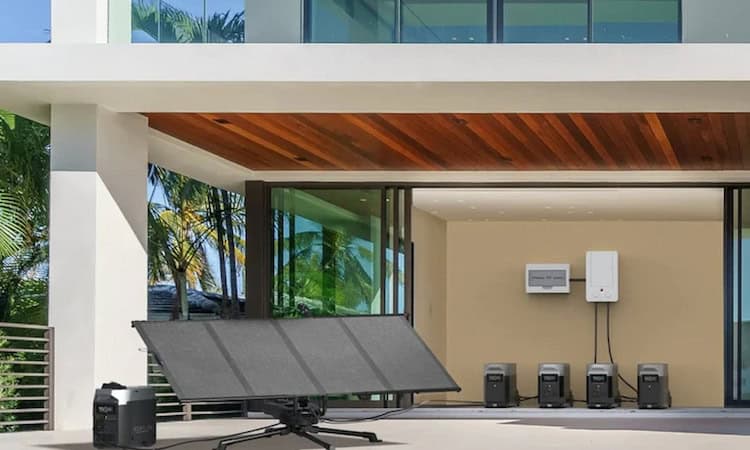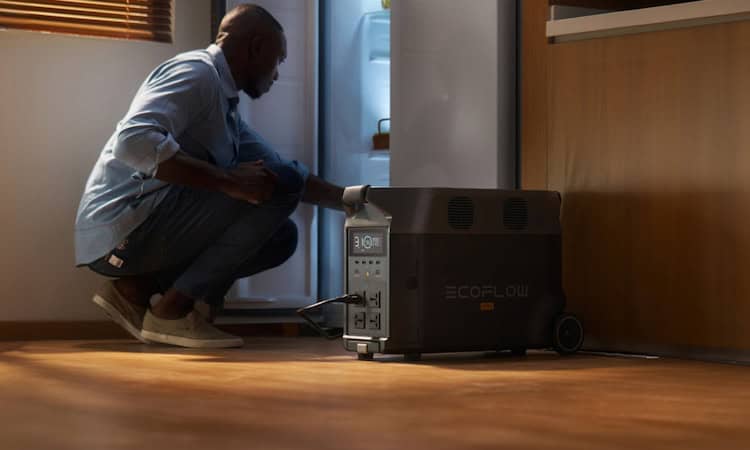Just when you thought rolling blackouts were behind us, Eskom has reminded us that they’re still very much a reality. After nearly 10 months without load shedding, South Africa was hit with Stage 3 power cuts at the end of January 2025, as multiple breakdowns forced Eskom to shed 3 GW of electricity. If you were caught off guard, you weren’t alone—many people had started believing that rolling blackouts were a thing of the past.
But as we’ve seen, power cuts can return at any time, often with little warning. So, what exactly are rolling blackouts, why do they happen, and how do they affect our daily life? More importantly, how can you be better prepared so that the next round doesn’t leave you scrambling? Let’s break it all down in simple terms.
What Are Rolling Blackouts?
A rolling blackout is a planned power outage that happens in specific areas for a set period of time when the demand for electricity exceeds the available supply. Unlike unexpected power failures caused by technical faults or bad weather, rolling blackouts are controlled and scheduled by the electricity provider—like Eskom in South Africa—to prevent the entire power grid from collapsing.
Think of it like this: if too many people try to use electricity at once, the system gets overloaded. To stop a total nationwide blackout, Eskom switches off power in different areas at different times, sharing the electricity load across the country.
These rolling South Africa power outages, commonly known as load shedding, have been happening for years. They are organized in stages, ranging from Stage 1 to Stage 8, with higher stages indicating more severe power cuts.
Causes of Rolling Blackouts in South Africa
As we’ve seen, rolling blackouts in South Africa happen for one simple reason: there’s not enough electricity to meet demand. But the real question is, why does this keep happening? Here’s a breakdown of what causes blackouts:
Aging and Failing Power Stations
Many of Eskom’s coal-fired power plants are decades old, and like any aging machinery, they break down more often. These breakdowns reduce the amount of electricity available, forcing Eskom to cut power in different areas to prevent a total grid collapse. Even newer power stations like Medupi and Kusile have faced serious design flaws and maintenance issues, adding to the crisis.
Lack of Maintenance and Repairs
Regular maintenance is crucial for keeping power stations running efficiently, but Eskom has struggled with delayed and incomplete repairs over the years. When multiple units break down at the same time—like we saw in January—Eskom is left with no choice but to implement rolling electricity outages while they fix the problem and replenish emergency reserves.
Coal Supply and Quality Issues
Over 80% of South Africa’s electricity comes from coal-fired power plants, but coal shortages, poor-quality coal, and supply chain disruptions have made it harder to keep these stations running at full capacity. In some cases, coal contamination or theft has led to unexpected breakdowns, forcing Eskom to shed load.
Limited Renewable Energy Integration
While solar and wind power have grown in South Africa, they still don’t contribute enough. Eskom has been slow to integrate more renewable energy projects into the grid, meaning the country still heavily relies on unstable coal-fired stations.
Financial and Operational Challenges
Eskom has faced years of financial struggles, corruption scandals, and mismanagement, all of which have made it harder to invest in new power stations or properly maintain the existing ones. The utility also has massive debts, making it difficult to secure funding for necessary upgrades and expansions.
Increased Demand for Electricity
As South Africa’s population grows and industries expand, electricity demand keeps rising. But Eskom hasn’t built enough new power plants to keep up, leading to supply shortages and the need for rolling blackouts to balance the system.
Climate Change and Extreme Weather Events
Climate change increases the frequency of extreme weather events, such as droughts and floods, exacerbating the energy crisis. These conditions damage energy infrastructure and disrupt energy production, triggering as rolling blackouts a precaution against power imbalances.
Effects of Rolling Blackouts
Rolling blackouts don’t just mean sitting in the dark for a few hours. These power cuts affect almost every part of daily life, from businesses and public services to healthcare and personal routines. Here’s a closer look at the biggest impacts:
Disruptions to Daily Life
Whether you’re cooking dinner, watching TV, or working from home, a sudden power cut can throw your plans into chaos. Many people rely on electricity for essential tasks, and without it, things like keeping food fresh, staying connected online, or even charging your phone become a challenge.
Economic Impact
- Business Disruptions: Frequent power cuts hinder operations for businesses of all sizes. Small enterprises, in particular, struggle without the resources to invest in backup power solutions, leading to decreased productivity and revenue losses.
- Increased Operational Costs: Companies incur additional expenses to mitigate the effects of load shedding, such as purchasing generators and fuel, which can strain financial resources.
- Job Losses: South Africa’s economy relies heavily on industries like mining, manufacturing, and retail—all of which need consistent electricity. When power cuts happen often, factories shut down, businesses close, and people lose jobs.
Public Services and Safety
- Healthcare Challenges: Hospitals and clinics face difficulties during power outages, especially in rural areas. Essential services like surgeries can be delayed, and maintaining proper storage conditions for vaccines and medications becomes challenging.
- Water Supply Interruptions: Electricity is crucial for water treatment and distribution. Power cuts can disrupt these processes, leading to water shortages and affecting sanitation.
- Increased Crime Rates: Darkened streets and inactive security systems during blackouts provide opportunities for criminal activities, leading to heightened safety concerns among residents.
Environmental and Health Concerns
- Air Quality Deterioration: The use of diesel generators during outages contributes to air pollution, posing health risks to the population.
- Food Safety Issues: Prolonged power cuts can compromise refrigeration, leading to food spoilage and increasing the risk of foodborne illnesses.
Public Frustration and Unrest
Persistent load shedding has led to public protests and a decline in overall happiness among South Africans, as daily life becomes increasingly unpredictable.
How to Prepare for Rolling Blackouts?
Since rolling blackouts have, sadly, become a regular part of our life in South Africa, it’s important to have a plan in place so you’re not caught off guard when the power goes out. Here are some practical ways to prepare for load shedding and keep things running smoothly:
Stay Informed About Load Shedding Schedules
The first step to preparing is knowing when the power will be off. Check Eskom’s load shedding schedule through:
- The Eskom Se Push app
- Eskom’s official website and social media pages
- Local municipality websites if you’re not directly supplied by Eskom
Set reminders or alarms so you can plan your activities around power outages instead of being caught by surprise.
Keep Essential Devices Charged
Make sure your phone, laptop, and other important devices are fully charged before the power goes off. If you rely on your phone for work or emergencies, invest in a power bank or portable power station to keep it charged during extended outages.

Invest in Backup Power Solutions
If rolling blackouts have taught us anything, it’s that having reliable home power backup solutions can make all the difference.
Whether you need to keep your lights on, charge your devices, or power essential appliances, EcoFlow’s load shedding solutions, including solar panels, portable power stations, and smart generators can help you stay prepared.
One of the best ways to protect yourself from power outages is by using a solar generator for power blackouts—a combination of solar panels and portable power stations that lets you produce, store, and use clean electricity when Eskom cuts the power.
If you’re looking for a powerful and expandable solar generator for power blackout, the EcoFlow DELTA Pro Portable Power Station paired with EcoFlow 400W solar panels is a fantastic choice. The DELTA Pro is designed for home backup and offers a massive 3.6kWh capacity, which can be expanded all the way up to 25kWh. That means you can keep your essential appliances running smoothly—even during extended outages.

Here’s why the DELTA Pro is an ideal choice for load shedding:
- Power Almost Anything: With 3600W of AC running output (expandable up to 7200W with 2-unit Smart Home Panel integration), it can easily handle fridges, TVs, Wi-Fi routers, and most high-power appliances like air conditioners and washing machines.
- Seamless Home Backup: The Smart Home Panel allows you to integrate the DELTA Pro directly into your home circuits. When a blackout hits, the system automatically switches to backup power in just 20ms, so you barely notice the outage.
- Multiple Charging Options: The DELTA Pro supports six different charging methods, including an EV charging station, wall outlets, and solar panel setups. You can even combine multiple charging sources to reach an impressive 6500W recharge speed, meaning it’s ready to go in as little as 2.7 hours.
- Fast and Optimal Solar Panel Recharging: Pair it with 3 EcoFlow 400W solar panels, and you can fully recharge in just 4-8 hours, depending on sunlight conditions. The self-supporting protective case of solar panels doubles as a stand, letting you angle the solar panels between 40-90° for maximum sun exposure.
- Smart Energy Management: With the EcoFlow app, you can monitor and control your home circuits remotely, track energy usage, and even schedule power consumption for efficiency and cost savings.

Plan Your Meals Wisely
Since rolling blackouts can last for several hours, it’s a good idea to prepare meals in advance or choose foods that don’t require cooking. Keep a gas stove or portable gas cooker handy so you can still make tea, coffee, or simple meals when the electricity is out. Also, avoid opening your fridge or freezer too often to keep food from spoiling.
Have Alternative Lighting Ready
Candles and paraffin lamps can be risky, so instead, stock up on battery-powered lights, LED lanterns, and rechargeable torches. Keeping them in easily accessible spots will save you from scrambling in the dark.
Protect Your Appliances
Power surges when electricity comes back on can damage your appliances. To prevent this:
- Use surge protectors for sensitive devices like TVs, fridges, and computers.
- Unplug electronics before the power goes out and only plug them back in after a few minutes once the power returns.
Keep Emergency Supplies Ready
Load shedding can sometimes last longer than expected, so it’s useful to have an emergency kit ready. This can include:
- Bottled water
- Non-perishable food
- First-aid supplies
- Flashlights and extra batteries
- A list of emergency contacts
Secure Your Home
Since load shedding can affect security systems, make sure your alarms, electric fences, and gates have backup power. Also, be extra cautious at night, as rolling blackouts can create opportunities for crime.
Conclusion
The return of rolling blackouts after nearly a year of stability is a wake-up call—it’s clear that Eskom’s energy challenges aren’t over yet. With breakdowns still happening and emergency reserves needing constant replenishment, power cuts could be back more often than we’d like. Instead of waiting to be caught off guard again, now is the time to prepare.
Make sure you have backup lighting, keep your devices charged, and stay updated with the latest load-shedding schedules. Most of all, investing in reliable and eco-friendly backup solutions like solar generators can not only keep your important appliances running, but also contribute to the broader transition towards renewable energy sources.
FAQs
Why is South Africa having rolling blackouts?
South Africa experiences rolling blackouts (load shedding) due to a shortage of electricity supply caused by aging power plants, maintenance issues, breakdowns, and insufficient new energy generation. Eskom, the state-owned power utility, implements load shedding to prevent a total grid collapse. Factors like coal supply problems, corruption, and delays in renewable energy projects also contribute to the crisis.
What is a rolling brownout?
A rolling brownout is an intentional, temporary reduction in voltage by utility companies to manage excessive electricity demand and prevent complete blackouts. Unlike rolling blackouts, which involve scheduled power outages, rolling brownouts maintain power delivery at reduced voltage levels, causing lights to dim and appliances to operate less efficiently. This measure helps balance the electrical grid during peak usage periods or emergencies.
How long do blackouts last?
The duration of rolling blackouts in South Africa, better known as load shedding, varies depending on the severity of the power shortfall, categorized into stages from 1 to 8. In Stage 1, you might experience power cuts of about 2 hours per day, whereas in Stage 8, outages can extend up to 12 hours within a 24-hour period. The specific timing and duration of load shedding in your area can be found on Eskom’s official website or through local municipality schedules.
What is the difference between a power outage and a blackout?
A power outage is a general term for any loss of electricity, which can be planned or unplanned and may affect small or large areas. A blackout is a specific type of power outage that is sudden, widespread, and complete, often caused by system failures or extreme demand.
